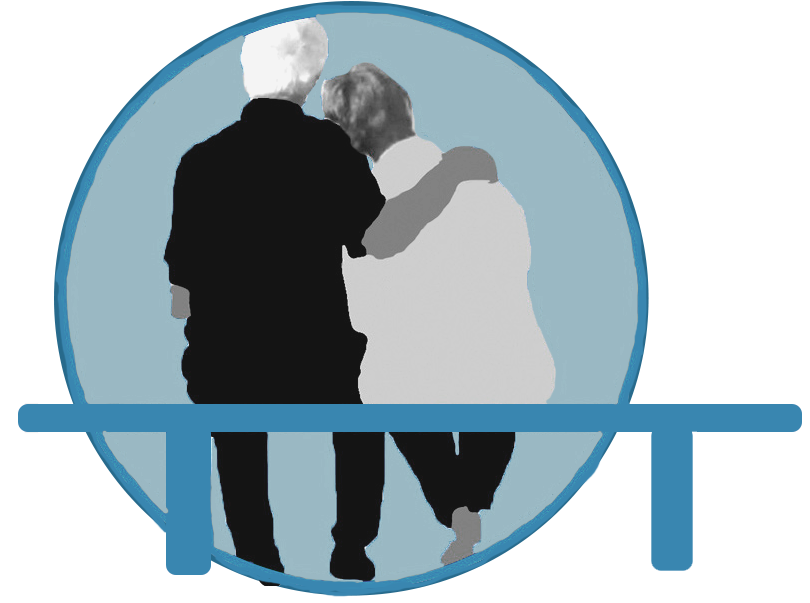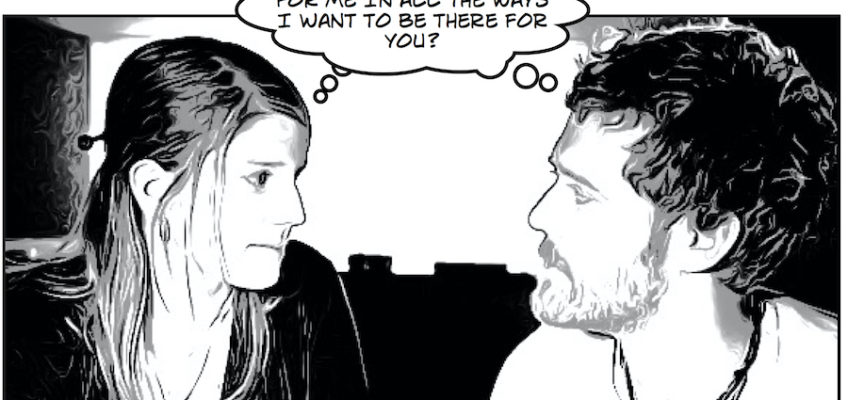What do we mean when we talk about connection? Well, we most likely have different things in mind. Also, we may know what it feels like when we are connecting with our partner, but not be so able to describe the experience. My description of connection is idealistic. It is stated as things for which we might strive. It is important for us to remember that we all fall, all the time, well short of any ideal.
I imagine your connection as a channel made up of five currents that carry essential emotional experiences between you. The more these essentials flow between you the more your relationship thrives. If I use the metaphor of a river, there are several layers of currents, each carrying a necessary and valuable aspect of your connection. If you look at any river you will notice that the currents flow into and through each other. They constantly affect each other. If I use the metaphor of an electrical conduit, there are several interweaving strands carrying currents of electrical charge. Each current can be distinguished from each of the others. I hope the first metaphor will help you imagine the ways each of the currents in your relationship affect each other. I hope the latter metaphor will help you focus on the separate currents of your connection.
The first current is the experience of closeness, affection, warmth, tenderness, and emotional safety. You rest in each other’s arms. You lay your head in your partner’s lap. You hug in the bathroom. You ask for tenderness and count on receiving it. You know he or she will be there eventually. You offer the gift of your care and affection and know that your partner values these gifts. You care about the things that hurt each other, including the hurts you each are responsible for making. This current contains your feelings and actions that repair and console. You are not always with each other in these ways, but you are regularly with each other like this. To the degree you can count on these qualities of connection your relationship will be experienced as a treasured and valuable thing. You each have a part, together, in maintaining the flow of this current.
The second current is that of your experience of yourself. How can your experience of yourself be a current that travels between, you might ask? It is the experience of your distinctness, of your sense of personhood, your identity. I mean this as the profound sense of your own being. And I mean it, particularly, as your singular self being carried in a current from you to your partner. This is different than your sense of self when alone, driving in your car, working alone on a project, or being by yourself looking over the Grand Canyon. This is the remarkable interior experience of your self, opened for connection with your partner. You, yourself, allow this current to flow from the inside.
The third current carries the experiences of recognition, regard, attunement, and intimate knowing. It is the experience of your partner reading you well, seeing you accurately, and being recognized in your distinctness. It the experience of reading your partner well, seeing your partner accurately, of recognizing your partner’s distinctness. This current contains your ability to perceive (at a level that can be beneath words) the feelings, thoughts and intentions of your partner. When you open your eyes to look deep inside your mate and when you open your heart to feel your partner you are opening the flow of this current. This current can flow in just one direction or in both at the same time, but you, yourself, must maintain it.
The fourth is the current between you of mutual pleasure, which of course includes sensual and sexual pleasure. When this current is flowing—“emotional openness and responsiveness, tender touch, and erotic exploration all come together” (Sue Johnson, see sidebar for note). This current can also convey certain unique qualities of playfulness and humor. There are primal qualities of being that are sometimes expressed and experienced in this current. It’s vital for both of you to nourish its flow.
The fifth current includes experiences of collaboration, cooperation, and teamwork. It carries the satisfactions of coming together to meet shared goals. Sacrifice and compromise are part of this current. You need for it to flow in all parts of your shared lives, especially in the raising and nurturing of your children. This current includes the ways you support one another in your separate lives. Furthermore, it encompasses your cooperation in the building and maintenance of all your other mutual and separate important relationships. You cooperate to help each other make as fulfilling a life as possible. This strengthens both of you. You also feel the flow of this current in areas of collaborative pleasure as well (like making music together, sharing hobbies, playing games, and having good conversations). This current requires both of you to sustain its flow.
How does therapy help with your connection?
The flow of each of these currents can be dampened or restricted or shut off in many ways and for many good reasons. Growing up, we learned about what seems allowable between oneself and one’s most significant other. Sometimes we do not get a chance to experience some of these essentials in childhood; one of the currents might not yet be turned on. We manage stress and distress in ways that affect the flow of these currents. We regulate the difficulties in our relationship in ways that protect us from pain, but cut us off from these essentials. We practice things and they become habitual. We build patterns together that eventually seem to govern how we live. Sadly, as a result we can stray very far from what we need most.
Couple therapy provides solutions, but not in the ways you might expect. It is different than a book of beautiful advice and guidance. And it shouldn’t be confused with a lecture or course that is full of wisdom about these things. The uniqueness of therapy is that someone helps you experience, in the moment, the ways you close the current, so that you can decide to open it, rather than live in the habitual. Your therapist (and your partner) help you struggle through the very good reasons (that are full of feeling and importance) that you may be closed so that you’ll allow the flow of these things between you. Your therapist helps you find and feel the function of the patterns that seem to govern the flow of these essentials.
Couple therapy can be an unparalleled gift to your relationship. It supports the development of realistic and attainable goals for connecting with your partner. It offers you a chance to slow things down and process them at a speed that helps you integrate all the feelings and good reasons that the relationship is flat or stuck in pain. This helps you set your deepest intentions toward opening these currents. Once you do that, you can find many creative ways to help each other make those openings. One of your therapist’s main jobs is to help you find ways to make those openings so that you can always rely on your ability to do so, even long after you’ve completed your therapy.
Sincerely,
Robert Ogner, July 24, 2008


